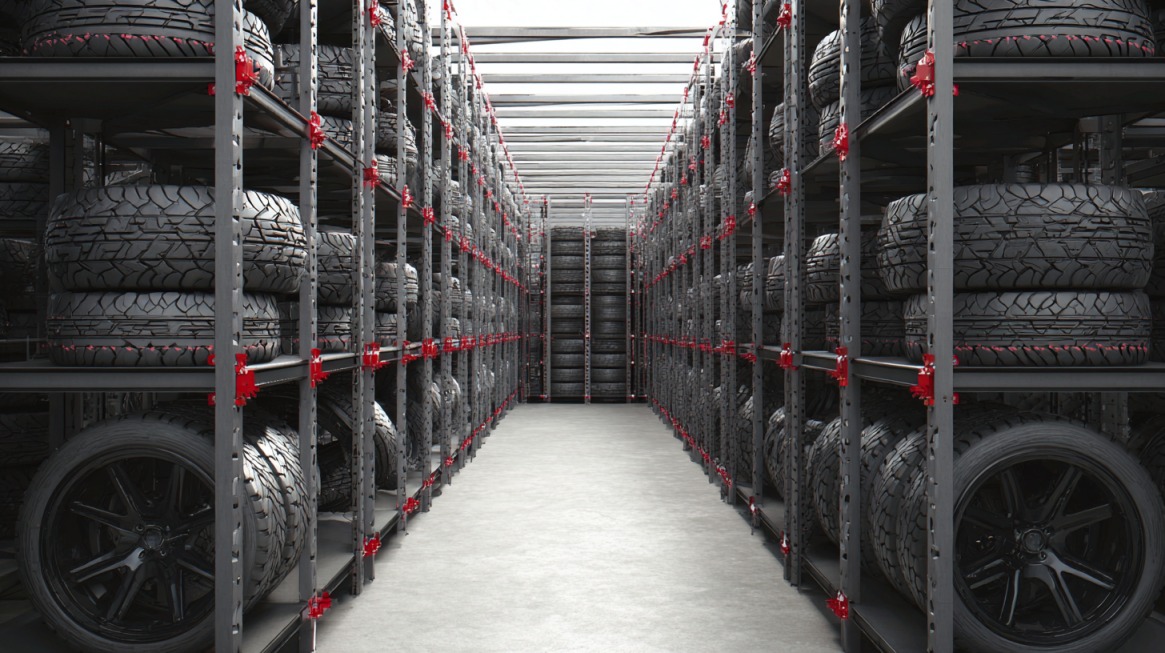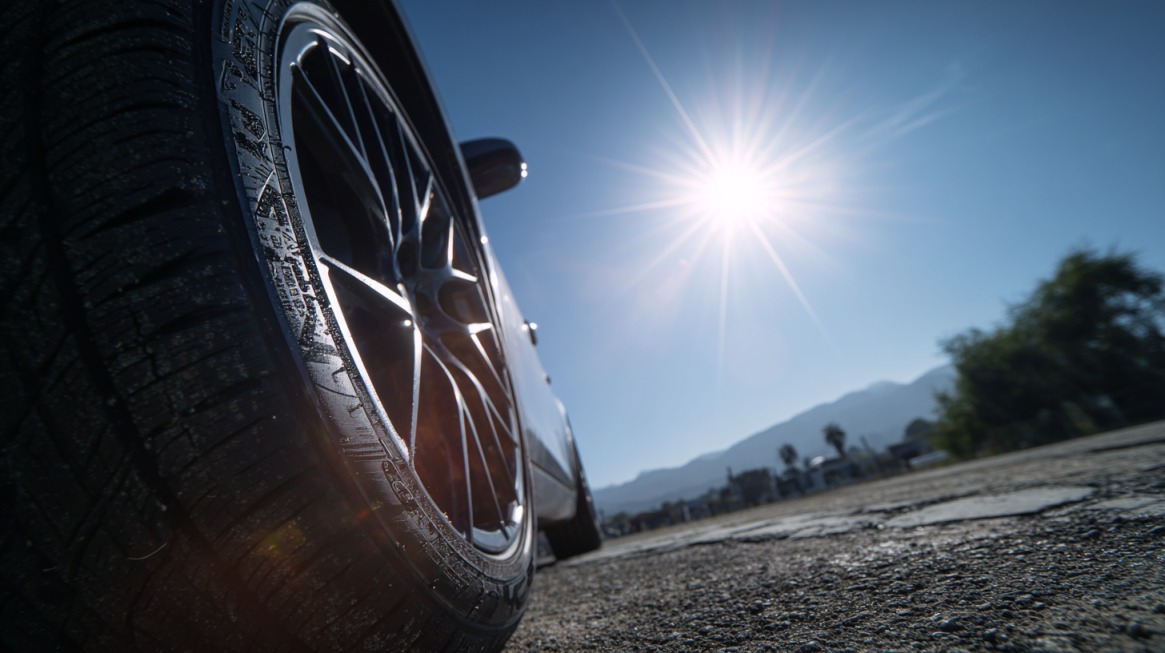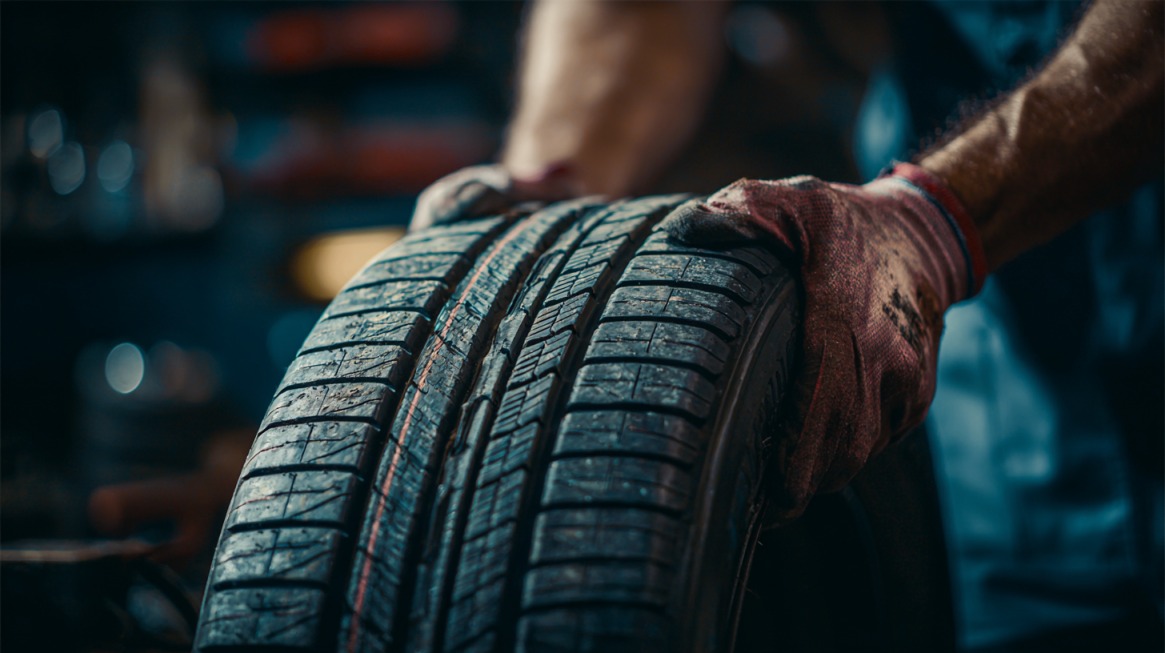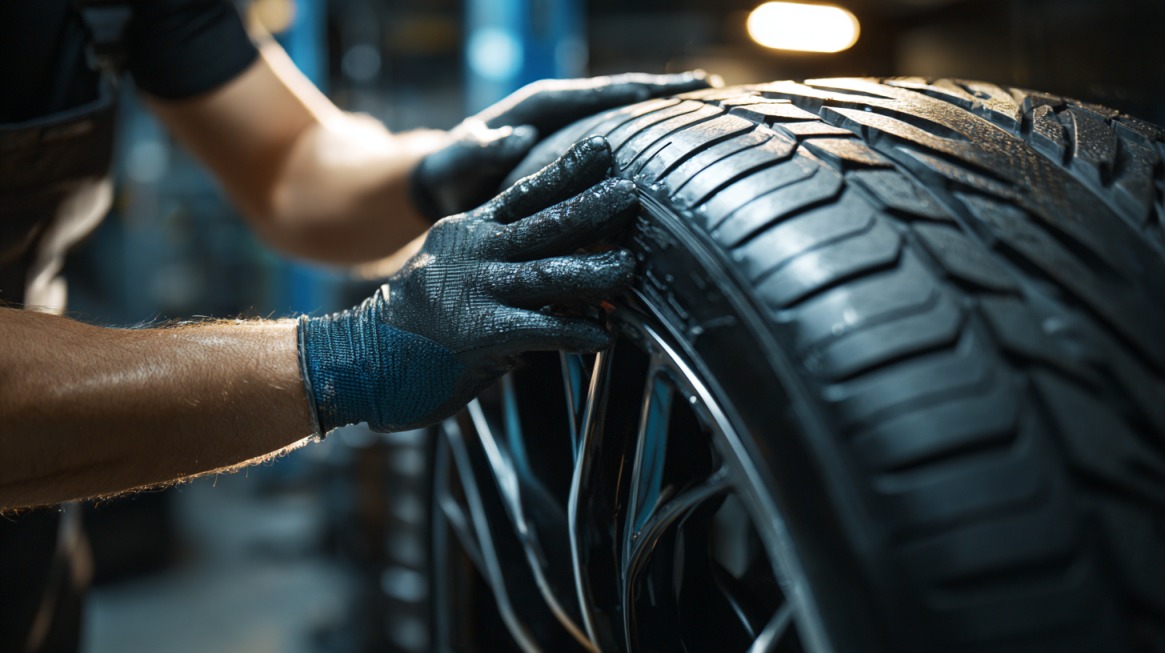Tire safety is often underestimated, yet it directly influences vehicle control, braking, and accident prevention.
According to national data, more than 11,000 tire-related accidents occur every year, showing just how dangerous overlooked maintenance can be.
Among the hidden risks, dry rot is one that many drivers ignore until it becomes a serious hazard.
Cracks may look harmless at first, but they weaken rubber integrity and create a high chance of blowouts.
Warning Signs of Tire Dry Rot
Dry rot develops slowly, often without drivers noticing until the damage becomes advanced. Recognizing early symptoms is essential because timely action can prevent accidents and extend tire life. Careful inspection during routine maintenance can help you detect warning signs before they compromise your safety.
Cracks on the sidewalls or tread are usually the earliest sign. At first, they may appear as small, shallow lines that look harmless, but over time, they deepen and form brittle fractures. These cracks reduce flexibility and compromise the tire’s ability to maintain pressure and traction.
Color fading is another visible clue. Tires start out with a dark, glossy finish due to protective oils in the rubber. Once those oils evaporate or degrade, the surface becomes dull gray or ashy, which often signals advanced dry rot.
Brittleness can also be felt during inspection. A healthy tire has flexibility when pressed, but a rotted one flakes, crumbles, or peels under light pressure. This is especially common on tires that have been in service for many years.
Loss of air pressure should never be ignored. Frequent refilling is not always caused by punctures—air can escape through compromised sidewalls and weakened rubber.
Handling issues becomes noticeable in later stages. Reduced grip on the road, vibrations through the steering wheel, or wobbling at higher speeds are all symptoms that point toward severe structural deterioration caused by dry rot.
@nickdrom #stitch with @prestonstew everything returns back to nature—somethings faster than others. #vehiclemaintenance #dryrot ♬ Epic Music(842228) – Pavel
What Causes Tire Dry Rot?
Dry rot does not appear overnight. It develops gradually due to a combination of aging, environmental conditions, and maintenance habits.
By knowing what accelerates the process, drivers can take proactive measures to extend tire life and avoid sudden failures.
Age of Tires
Rubber naturally degrades over time, even if tread depth looks sufficient. After six years, compounds begin to lose elasticity, making cracks more likely.
A tire may appear usable on the outside, yet its internal structure is already weakened.
Regular inspections after the six-year mark become essential, and replacement should not be delayed once signs of brittleness appear.
UV Rays and Heat

Direct exposure to sunlight speeds up chemical breakdown. Ultraviolet rays penetrate rubber surfaces and weaken molecular bonds, while high temperatures strip away protective oils.
Vehicles parked outdoors are especially vulnerable to this accelerated deterioration.
- Surface cracks forming faster
- Loss of dark black finish
- Reduced flexibility during driving
Cold Weather
Low temperatures create a different but equally damaging effect. Rubber becomes stiff and brittle in freezing conditions, limiting its ability to flex with road impacts.
Over time, this rigidity results in fractures that deepen during repeated cycles of freezing and thawing.
Lack of Use
Vehicles that sit idle for extended periods often develop tire problems faster than those driven regularly.
Stationary tires experience uneven pressure, causing stress on certain sections. Over time, those areas crack while unused portions harden, creating weak spots that compromise safety.
Improper Storage

Storage conditions play a major role in tire longevity.
Tires left outdoors without cover face both UV exposure and fluctuating temperatures.
Indoor storage can also be damaging if tires are placed near heaters, motors, or electrical equipment that releases ozone, which is known to deteriorate rubber compounds.
Corrosive Chemicals
Chemicals encountered on roads and during cleaning contribute heavily to dry rot. Road salts, deicers, and petroleum-based cleaners strip protective compounds that keep rubber flexible.
Regular exposure without proper rinsing accelerates aging and weakens structural integrity.
- Petroleum-based cleaners
- Road salt during winter
- Solvent-heavy tire dressings
Incorrect Inflation
Pressure management has a direct impact on tire health. Under-inflation causes excess flexing of sidewalls, leading to heat buildup and premature cracking.
Over-inflation stretches rubber past its limits, thinning surfaces and causing small fractures. Both scenarios create stress fractures that lead to faster dry rot development.
- Uneven tread wear
- Increased sidewall strain
- Higher chance of premature cracking
Is it Safe to Drive on Dry Rotted Tires?

Driving on dry rotted tires is unsafe under any circumstance. Rubber that has lost its elasticity is prone to blowouts, tread separation, or complete structural failure, especially at high speeds.
Minor cracks may appear manageable, but they should be evaluated by a professional. If the damage is confirmed as surface-level, increased monitoring and protective measures may extend short-term usability.
Severe cracking means immediate replacement. Waiting too long risks accidents not only for the driver but also for passengers and others on the road.
Reports from federal agencies estimate more than 600 deaths occur each year due to tire-related failures. That statistic highlights why ignoring dry rot is never an option.
How to Prevent Tire Dry Rot
Preventing dry rot is far easier than dealing with its consequences. Simple maintenance habits and protective steps can greatly extend tire life and keep your vehicle safer on the road.
Proper Inflation and Maintenance

Tire pressure is one of the simplest yet most overlooked aspects of vehicle care. Under-inflated tires create extra flex in the sidewalls, generating heat that accelerates wear and increases the likelihood of cracks forming.
Over-inflation, on the other hand, stretches the rubber beyond its natural limit, making it more prone to splitting. A small investment of time with a manual gauge once a month helps ensure accurate readings, since dashboard sensors often miss slow leaks or slight imbalances.
Rotating tires every 5,000 to 6,000 miles spreads the workload evenly across all four tires.
Without rotation, the front set often wears faster due to steering and braking forces, creating localized stress that encourages dry rot. Balancing and alignment checks during rotations also help prevent uneven wear, which contributes to cracking over time.
Consistency is the key—drivers who stick to these habits see longer tire life and reduced risk of dry rot.
Sunlight Protection
Exposure to sunlight is among the most damaging environmental factors for tires. Ultraviolet rays break down the chemical bonds in rubber, leaving it dry and brittle. Heat from direct sunlight further accelerates the process, creating visible surface cracks and faded color.
Parking in a shaded area or an enclosed garage is the most effective way to prevent this.
For vehicles that must remain outdoors, UV-resistant covers provide a practical solution. These covers block harmful rays and create a cooler surface environment, slowing the breakdown of protective compounds.
Even partial shade or the use of protective sprays can help extend tire life by several years. Protecting against sunlight not only reduces dry rot but also preserves overall tread performance and traction.
Smart Cleaning
Cleaning practices often go unnoticed as a cause of dry rot. Many commercial dressings and cleaners contain petroleum distillates or harsh solvents that eat away at rubber compounds.
Although they may give tires a glossy finish, they shorten lifespan by stripping away the very oils that keep rubber flexible.
Safer alternatives include water-based cleaners that lift dirt and road grime without damaging protective layers.
Adding a UV-protectant spray after cleaning provides additional shielding against sunlight. This two-step approach keeps tires clean, resilient, and less likely to crack prematurely.
Regular gentle cleaning not only prevents chemical damage but also makes inspections easier, since cracks and fading become more visible on a clean surface.
Movement Matters
Tires are designed to flex, rotate, and distribute pressure. When a car sits idle for long periods, specific sections of rubber remain under stress while others are left unsupported. This uneven pressure leads to flat spots and encourages cracking in high-stress zones.
Vehicles stored for weeks or months without movement face a much higher risk of dry rot.
Driving the car periodically helps keep rubber compounds flexible and evenly distributes wear.
Even short trips around the neighborhood reduce the chance of stress fractures forming in stationary tires. For long-term storage, jack stands are a reliable solution
. By lifting the vehicle slightly off the ground, weight is redistributed away from the tires, relieving constant pressure and preserving structural integrity.
Owners of seasonal vehicles, such as RVs or sports cars, often rely on this method to keep tires in good condition year-round.
Check Tire Age and Load Limits

No matter how well-maintained, tires older than six to ten years must be replaced. Rubber simply cannot retain its elasticity forever. Avoid exceeding vehicle load ratings, since excess weight strains tires and increases failure risk.
- Monitor tire pressure monthly
- Rotate at proper intervals
- Protect against sunlight exposure
- Use safe cleaning methods
- Replace when aged or overloaded
What to Do If You Suspect Tire Dry Rot
Concerns about dry rot should be taken seriously at the first sign. Quick action can prevent dangerous situations and give you peace of mind on the road.
A visual inspection is the first step. Look closely for cracks, fading, and brittleness on both tread and sidewalls. Checking during routine maintenance or while washing the car makes the process simple and consistent.
Professional evaluation provides the clearest answer. A technician can identify whether the damage is cosmetic or structural. Surface-level cracks might not immediately compromise safety, but structural degradation always requires replacement.
Minor cracks may be temporarily managed with UV protection sprays and more frequent monitoring. Even then, the safety margin is reduced, and the timeline for replacement shortens significantly.
Moderate to severe cracking demands immediate replacement. New tires may seem like a costly investment, but it is far more affordable than the consequences of a highway blowout.
- Inspect tires regularly
- Seek professional evaluation
- Monitor minor cracks with caution
- Replace immediately if moderate to severe
The Bottom Line
Tire dry rot is a serious but preventable hazard. Cracks, fading, brittleness, and air leaks should never be ignored, as they indicate weakening rubber that can no longer protect you on the road.
Regular inspections, proper inflation, smart cleaning, protection from sunlight, and timely replacements are essential practices.
Safety for yourself and others always begins at the point where tires meet the road. Take time to check them today and avoid becoming part of the accident statistics tomorrow.
